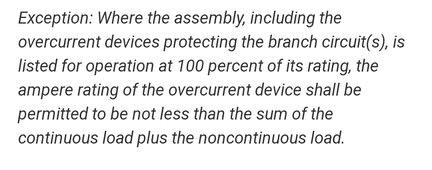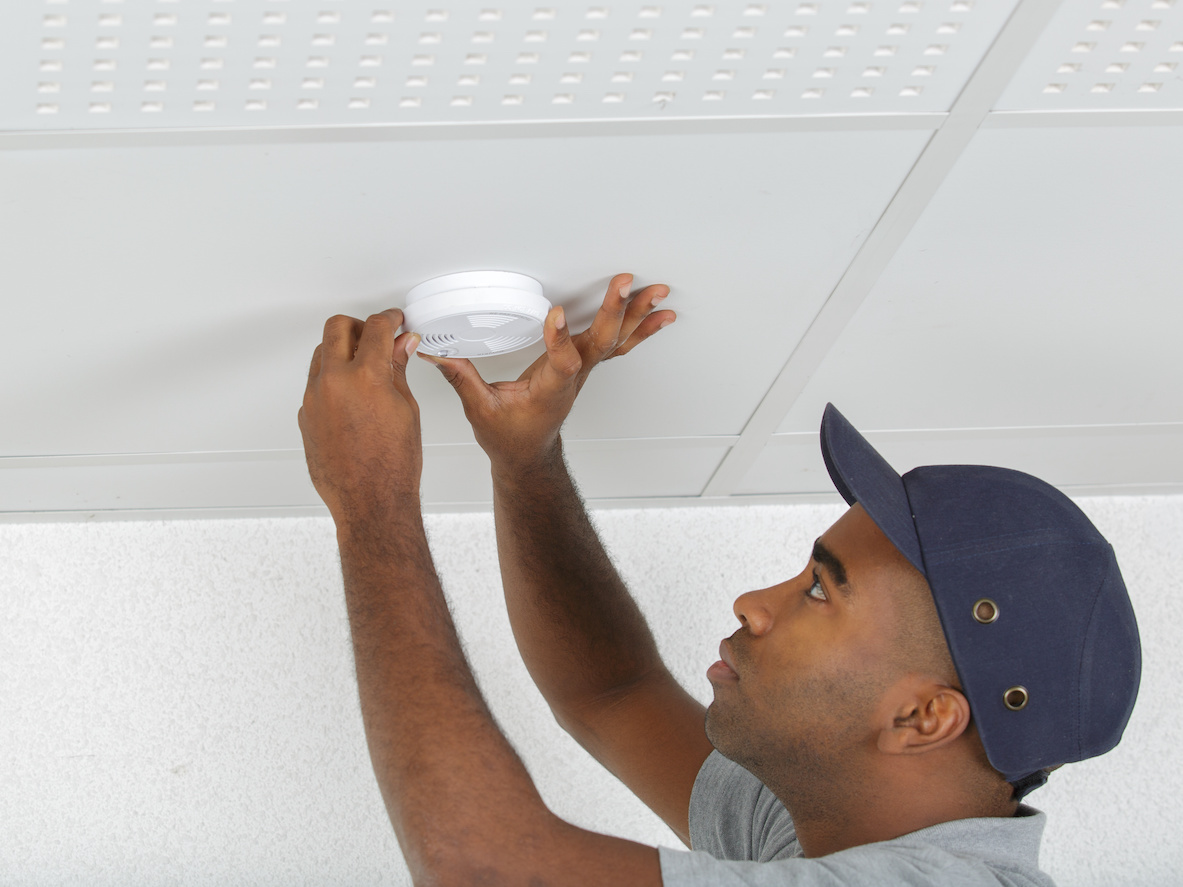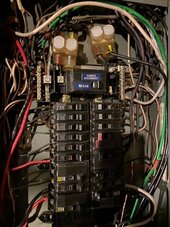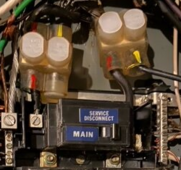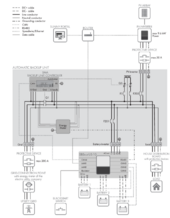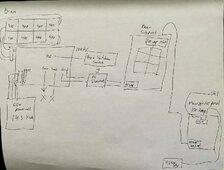This is the main panel at house where current grid tied solar array is . The side tap i refer to is that the solar AC feed enters the panel at the top with those polaris splice things.
OK cool, this is a "line side tap". There are many ways to get the barn tied in, with different tradeoffs.
Do you want battery backup power at your house? If so then the ideal place to put an inverter/battery combo is at the house, and this is probably the best way to maximize the value from an expensive stack of batteries. It's kind of silly to have backup power in the barn alone, unless you plan to rough it in the barn during an extended power outage.
With this approach, you would either trench new DC wire to the barn to attach to the solar panels (probably want 2-4 strings in the ground to make it easier to expand in the future, rather than just 1). Or add a grid tie inverter at the barn, and AC couple it to the house via the SolArk generator port.
Form the manual [the reason to put it on the generator port is that there is a relay on that port, which will pull the plug if the AC source misbehaves]. 19.2kW-AC is massive.

For reference a 11kW Growatt inverter is $1500 and you can probably buy used ones even cheaper. Not sure how the cost will compare for you, but I feel that having backup power at the house (and able to use the 14kWh battery for things other than the EV, like maybe if you add electric heat in the house), + saving having to re-trench 200ft for a DC run, is well worth $1500. Sure AC coupling is a little less precise than DC when it comes to edge cases like when your battery is full but it seems to save trouble. You would want to do some due diligence on the forum (ask questions/search for threads) to verify that the battery inverter at the house and the grid tie inverter at the barn are compatible in AC coupling.
(It probably is possible to have inverter and battery at barn and add something to disconnect grid at the house, but that is probably a pretty expensive piece of equipment, that is included in the inverter already. And you probably still have to trench a line for a control wire, and 200 ft might even be too long for the control wire to run).
Sorry I meant nightly charging draw of 10-20 KW, and the car battery is 60 KWH so yeah 60 if it were drained. This would be in addition to powering the rest of house per evening - at absolute worst 10kwh total draw (guesstimate)
I would recommend installing an Emporia Vue as an early step in research, that would get rid of the need to guess both the whole house consumption and individual consumption.
I get net 1:1 net metering, grandfathered in on that from way back in 2010. So yeah I was thinking the 14.3 battery would be ok/adequate.
not looking to sell back per se, looking to net zero on monthly bills now that we are full time and have an EV (this was a second home in 2010 and system size/output was limited by usage as demonstrated by metering/bills at that time)
Still not sure what the goals are. Do you mean that you cannot add more solar panels onto net metering? Because if you can, it is obviously going to be a higher ROI to do grid-tie only. If you are not allowed to add more solar panels and want the emergency power, then certainly batteries can make sense.
I assume that 14.3kWh is OK because your 10kWh overnight consumption other than EV is handled by your current net metering bank. So the full 14.3 kWh (actually probably more like 80-90% of this after efficiency and not being able to charge to 100% are factored together) is available to EV charging.
Shop Solar just spec'd the 2.4 kw of panels with this kit. As I already have the 4.2 array I wasn't directly questioning their choice. I have almost ideal roof positioning available so yeah id still need what 7 hours to charge a completely depleted eg4 wall battery?
I'm suspicious of how carefully they did your pre-sales design, unless they have extremely good IT and software (hahahahahaha). That sounds really undersized to consistently generate 14kWh year round. Solar panels are cheap, just fill all the rails that fit on the roof planes of interest.
Run your own PVwatts simulation (free online tool from NREL, very easy to use), you can control how much time you invest and how careful you are. I got screwed by solar salespeople not using tool correctly, yet handing money over to them.
SolArk just seems to be a very well regarded hybrid inverter, though im open to any and all suggestions. I'd like to undersstand this well enough to draw up some plans, get an electrician to review, submit for permit in town and then do most of work myself, with electrician signing off/inspecting along with town inspector.
SolArk is fine, I mostly raised it b/c that battery is not allowed in my state with PowerPro since the inverter/battery combo has to be UL listed as a unit. I don't know if SolArk has a similarly-priced outdoor battery.
It is well-worth understanding things enough to check the quality of plans, but note that plans services are a dime a dozen and they will draft structural, solar electrical, ESS electrical + structural + floorplan, spamming all the boilerplate text required by state code on plansets, everything... $300 is easy to hit for a planset without engineer stamps. I thought my plans were a bargain just factoring in the CAD that went into making clear to AHJ what rails/panels would look like, as well as having someone else translate the mounting hardware tables to a design, for my location. Some people here have had success using the web tools for IronRidge themselves.
I would say the highest ROI for your design time is making sure the system size specifications and requirements are correct. Then you can hand over your $300 for the details beyond that and drawings.



